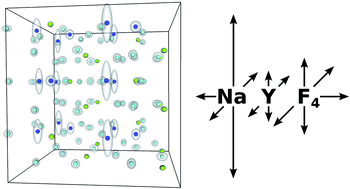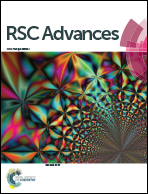Structure of the hexagonal NaYF4 phase from first-principles molecular dynamics
Abstract
The hexagonal phase of NaYF4 is one of the most popular hosts for the synthesis of upconverting phosphors. The local structure of the lattice is known to have an impact on the optical properties of the doped NaYF4, however despite extensive research being conducted in this field, the structure of the crystalline β-NaYF4 phase is little understood. In this paper, the bulk β-NaYF4 is investigated by means of Car–Parrinello Molecular Dynamics simulations. Three different space groups proposed in the literature are compared. The results show that models based on P![[6 with combining macron]](https://www.rsc.org/images/entities/char_0036_0304.gif) and P
and P![[6 with combining macron]](https://www.rsc.org/images/entities/char_0036_0304.gif) 2m space groups converge to the same structure with nine-fold coordination sites only, while the model based on the P63/m space group is distinct and contains sodium atoms in six-fold coordination sites. Besides coordination numbers, analysis of the distances and average structure, the paper also presents a study of the dynamics of the lattice. Depending on the model, anisotropic thermal vibrations are observed and quantified, as well as oscillations of the sodium atoms between adjacent sites. A different scale of oscillation is observed, depending on the element (sodium or yttrium) and coordination site. In some cases, a reduced symmetry of the coordination shell is observed.
2m space groups converge to the same structure with nine-fold coordination sites only, while the model based on the P63/m space group is distinct and contains sodium atoms in six-fold coordination sites. Besides coordination numbers, analysis of the distances and average structure, the paper also presents a study of the dynamics of the lattice. Depending on the model, anisotropic thermal vibrations are observed and quantified, as well as oscillations of the sodium atoms between adjacent sites. A different scale of oscillation is observed, depending on the element (sodium or yttrium) and coordination site. In some cases, a reduced symmetry of the coordination shell is observed.


 Please wait while we load your content...
Please wait while we load your content...